 Next up in my series about flying training facilities is SkySports Flying School, based at White Gum Farm, near York in Western Australia.
Next up in my series about flying training facilities is SkySports Flying School, based at White Gum Farm, near York in Western Australia.
The school was originally started in 1997 at Wyalkatchem for hang glider pilot training, soon adding powered hang-glider training to their repertoire. These aircraft are variously called ‘trikes’, ‘weight-shift’ or ‘microlights’ in Australia. The school moved to White Gum Farm (YWGM) in 2005, where they initially operated from a farm shed/hangar for a while. In 2006 the second hangar – H2 – was built and now hangars H3, H4 and H5 house a variety of trikes and 3-axis aircraft.
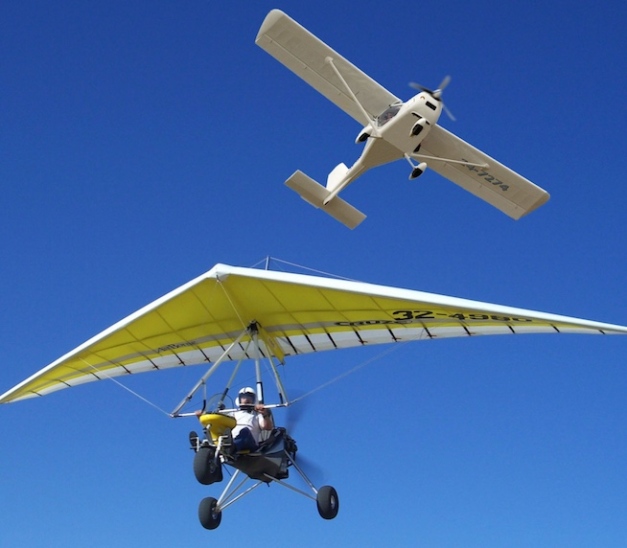 SkySports CFI at White Gum is Gordon Marshall, a very experienced trike and 3-axis instructor, although he says nowadays he seems to spend most of his time instructing in the Foxbat! In addition to Gordon, there are several (mainly) part-time instructors.
SkySports CFI at White Gum is Gordon Marshall, a very experienced trike and 3-axis instructor, although he says nowadays he seems to spend most of his time instructing in the Foxbat! In addition to Gordon, there are several (mainly) part-time instructors.
White Gum hosted the first ‘WestFly‘ event several years ago – the weather was fantastic and there was a great turnout of aircraft. However, the weather turned bad for the last couple of events and fly-in arrivals were very limited, so Gordon has decided to ‘rest’ WestFly for a short while. However, he’s planning a big event next year (2016) when the nearby ‘Fly Inn’ function centre opens.
The facilities at White Gum will continue to grow as its reputation spreads – the relaxed and friendly atmosphere, on-site accommodation and selection of runways has begun to attract visitors and flying students from far and wide. Best times to fly are probably spring and autumn – summers can get very hot!
 An interesting side-point: White Gum Farm, including the airstrips, is owned by Gary Sargeant, an accomplished radio/avionics engineer, who is also a trike pilot. Driven by the relatively high cockpit noise in trikes, Gary designed a new wireless, active noise reduction (ANR) headset for radio (and intercom) communications in noisy environments. This was developed, tested (mainly by Gordon) and re-designed over several years. The result
An interesting side-point: White Gum Farm, including the airstrips, is owned by Gary Sargeant, an accomplished radio/avionics engineer, who is also a trike pilot. Driven by the relatively high cockpit noise in trikes, Gary designed a new wireless, active noise reduction (ANR) headset for radio (and intercom) communications in noisy environments. This was developed, tested (mainly by Gordon) and re-designed over several years. The result 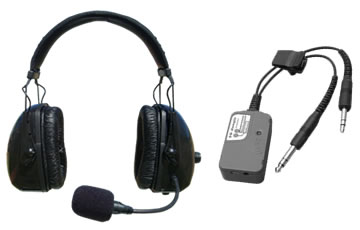 is the EQ-1 ANR wireless headset which can be used both in open and closed cockpit aircraft. I have used both the original version of the EQ-1 headset as well as the latest EQ-link in Foxbats and I must say they are one of the most comfortable headsets I have worn. My wife and I joined a group if fliers who did a 10-day round trip from Melbourne to Lake Eyre a couple of years ago, using the EQ headsets. They performed faultlessly and over 21 hours of flying, did not need re-charging, although we had less than an hour’s battery left when we got home. The ANR function works well and the lack of a wire connection with the aircraft makes them very convenient.
is the EQ-1 ANR wireless headset which can be used both in open and closed cockpit aircraft. I have used both the original version of the EQ-1 headset as well as the latest EQ-link in Foxbats and I must say they are one of the most comfortable headsets I have worn. My wife and I joined a group if fliers who did a 10-day round trip from Melbourne to Lake Eyre a couple of years ago, using the EQ headsets. They performed faultlessly and over 21 hours of flying, did not need re-charging, although we had less than an hour’s battery left when we got home. The ANR function works well and the lack of a wire connection with the aircraft makes them very convenient.
EQ now has a Facebook page: click here to visit




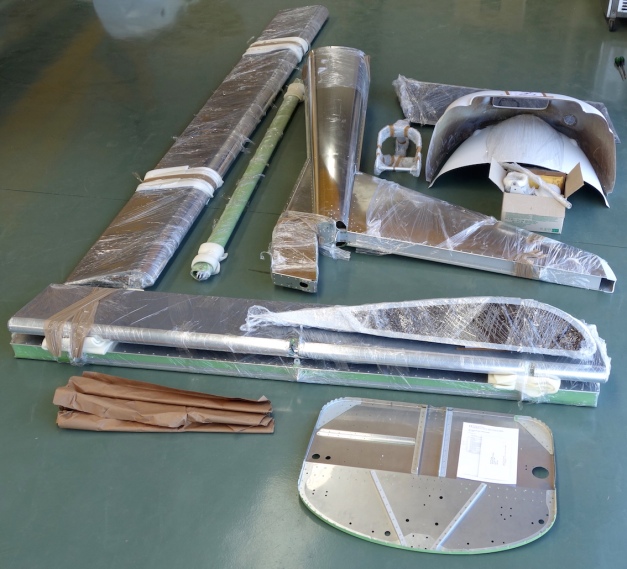





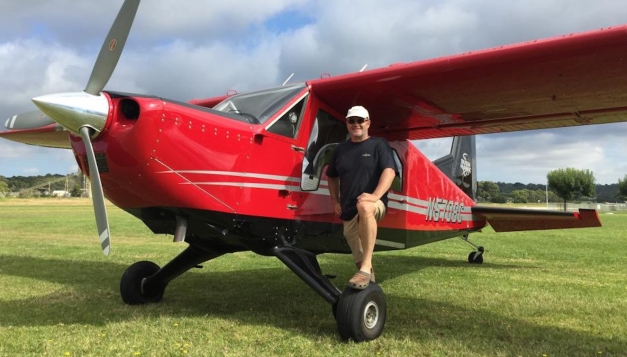
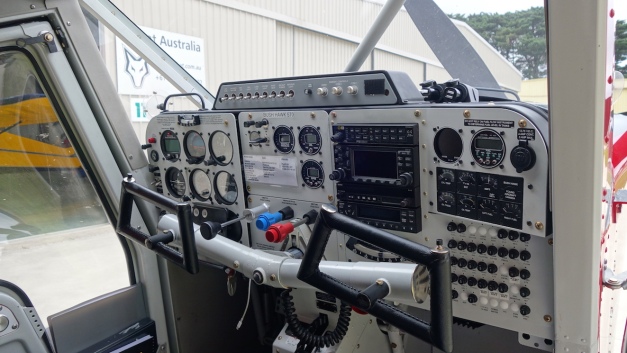 The next thing that strikes you is how small the control yokes feel; can they really control such a monster? However, the yokes themselves are mounted on a Y-shape tube which would do justice to the Sydney Harbour Bridge…
The next thing that strikes you is how small the control yokes feel; can they really control such a monster? However, the yokes themselves are mounted on a Y-shape tube which would do justice to the Sydney Harbour Bridge…